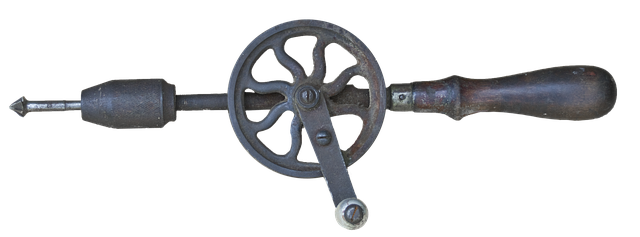System bottlenecks, like slow data processing in mHealth apps, hinder technology and healthcare performance. Optimizing these requires identifying hidden issues through advanced diagnostic tools such as real-time medical sensors and AI-powered analysis for data flows, code interactions, and network communications. Selecting the right tools involves evaluating data integration, user-friendliness, and scalability, enabling early detection of bottlenecks and enhancing system efficiency across industries from renal monitoring to food safety labs. Continuous monitoring and data interpretation are crucial for pinpointing areas hindering efficiency (bottlenecks) and implementing targeted solutions through specialized tools like diagnostic labs and handheld devices.
Uncovering hidden system bottlenecks is crucial for optimizing performance and efficiency. This comprehensive guide explores the entire process, from understanding the concept and its impact to practical strategies for identification and resolution. We delve into selecting the right diagnostic tools, implementing data collection, and interpreting results accurately. By following these steps, organizations can pinpoint issues, address them effectively, and revolutionize their operational landscape.
- Understanding System Bottlenecks: Definition and Impact
- Identify Key Areas for Analysis using Diagnostic Tools
- Choosing the Right Software for Your Needs
- Implementing Data Collection and Monitoring Strategies
- Interpreting Results and Identifying Bottlenecks
- Optimizing Performance by Addressing Pinpointed Issues
Understanding System Bottlenecks: Definition and Impact

System bottlenecks are significant constraints or roadblocks within a system that hinder its overall performance and efficiency. In the context of technology and healthcare, these bottlenecks can delay processes, reduce productivity, and impact user experiences. For instance, in mobile health (mHealth) apps, a bottleneck might be the slow processing of data, affecting the real-time analysis and feedback provided to users. Understanding these bottlenecks is crucial for optimizing systems and ensuring they function at their best.
When it comes to identifying system bottlenecks, selecting the right diagnostic tools plays a pivotal role. These tools enable thorough analysis by providing insights into various aspects of the system, such as data flow, resource utilization, and potential roadblocks. For instance, lab-quality diagnostics at home can leverage advanced water purification analysis tools to ensure accurate and efficient testing, eliminating bottlenecks in remote or underserved areas. By utilizing these diagnostic tools, professionals can uncover hidden issues, streamline operations, and ultimately enhance the overall system’s performance.
Identify Key Areas for Analysis using Diagnostic Tools

Uncovering system bottlenecks often requires a strategic approach, and one of the first steps is to identify key areas needing scrutiny. Diagnostic tools play a pivotal role in this process by offering insights into various aspects of a system’s performance. These tools are designed to analyse data flows, code interactions, and network communications, helping to pinpoint areas causing delays or inefficient operations.
When selecting diagnostic tools, consider leveraging AI-powered software for its ability to process vast amounts of data swiftly and accurately. Miniature medical sensors and remote patient monitoring devices can also be valuable assets, especially in complex healthcare systems, as they provide real-time data on system behaviour. These technologies enable continuous monitoring, allowing administrators to detect anomalies or bottlenecks early on, thereby facilitating prompt resolution.
Choosing the Right Software for Your Needs

Choosing the right software to uncover hidden system bottlenecks is a crucial step in optimizing your operations. It’s essential to select tools that align with your specific needs, whether you’re managing renal monitoring systems, operating point-of-care testing solutions, or running food safety diagnostic labs. Different software solutions offer unique features catering to various industries and processes; therefore, a thorough evaluation of your current workflows is vital before making a decision.
Consider the data integration capabilities, user-friendliness, and scalability of potential tools. Reliable diagnostic tools should streamline your operations by providing real-time insights, enabling quick issue identification, and facilitating efficient decision-making. By selecting software that caters to these aspects, you’ll be better equipped to uncover and address hidden bottlenecks, ultimately enhancing the overall efficiency and effectiveness of your systems.
Implementing Data Collection and Monitoring Strategies

Uncovering system bottlenecks requires a strategic approach to data collection and monitoring. The first step involves selecting the right diagnostic tools. Organizations should invest in advanced blood analysis equipment, vital signs monitors, and telemedicine screening tools to gather comprehensive data. These tools enable real-time tracking of key performance indicators (KPIs), helping to identify areas where processes are slowing down or breaking down.
By continuously monitoring these metrics, teams can quickly detect anomalies and take corrective actions. For instance, advanced blood analysis equipment can reveal hidden health trends among employees, while telemedicine screening tools facilitate remote assessments, reducing wait times and enhancing accessibility. This data-driven approach ensures that any bottleneck is identified as early as possible, allowing for efficient resource allocation and process optimization.
Interpreting Results and Identifying Bottlenecks

After gathering data through various diagnostic tools like mobile health (mHealth) apps, neurological assessment devices, and veterinary clinical assessment tools, the next crucial step is interpreting the results. This involves a meticulous analysis of trends, anomalies, and patterns within the collected data. By comparing performance metrics across different sections or time periods, you can pinpoint areas where the system is underperforming or experiencing delays. These could be bottlenecks that hinder efficiency, affecting user experience in various sectors such as healthcare or veterinary care.
Identifying bottlenecks requires a strategic approach. Start by examining data flow and processes within the system. Look for consistent lags, frequent errors, or high resource consumption. Cross-reference these observations with user feedback and real-world application scenarios, especially in contexts like monitoring patient health through mHealth apps or assessing animal conditions using veterinary clinical assessment tools. This multi-faceted analysis will help you zero in on specific areas needing optimization, enabling more effective problem-solving and enhanced system performance.
Optimizing Performance by Addressing Pinpointed Issues

Identifying performance bottlenecks is only half the battle; addressing them with precision is where true optimization begins. Once potential issues are uncovered through meticulous analysis, the next step involves selecting the right diagnostic tools to pinpoint the exact cause. This targeted approach ensures that resources are allocated efficiently, allowing for effective solutions to be implemented quickly.
Food safety diagnostic labs, handheld diagnostic devices, and veterinary clinical assessment tools are valuable assets in this process. These specialized resources enable teams to diagnose problems swiftly, whether it’s a food production line bottleneck, a field-based veterinary assessment, or any other scenario demanding immediate attention. By leveraging these advanced diagnostic capabilities, organizations can navigate through complex systems with clarity, ultimately enhancing overall performance and efficiency.
Uncovering and addressing system bottlenecks is a critical process for any organization aiming to optimize its operations. By understanding the impact of these bottlenecks, utilizing suitable diagnostic tools to identify key problem areas, and interpreting data effectively, businesses can make informed decisions. The right software selection and implementation of robust data collection strategies are essential steps in this journey. Once bottlenecks are pinpointed, organizations can strategically enhance performance, ensuring their systems run smoothly and efficiently. When choosing diagnostic tools, consider your specific needs to uncover hidden issues and unlock the full potential of your operations.
